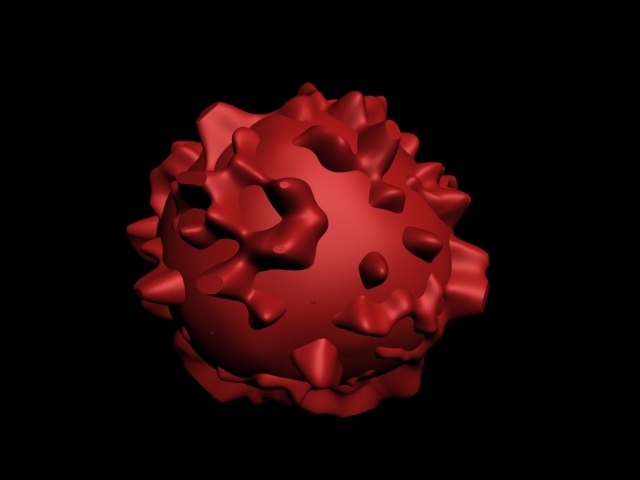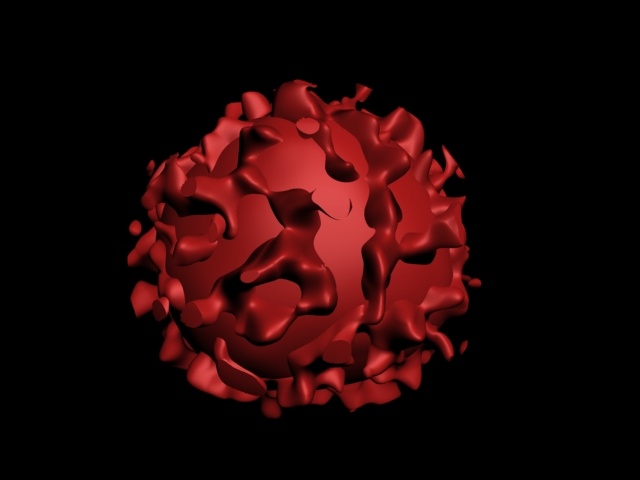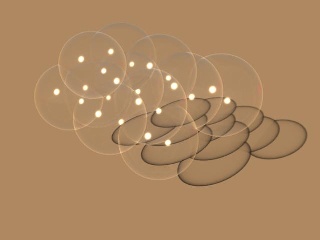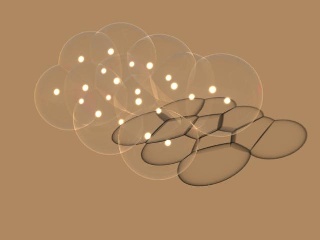Page History
...
While the simulation runs, it's in the background, and the user interface of 3ds Max remains active. You can change many simulation parameters (except for a few initial core parameters) during the simulation and see how they affect it. Rendering is also enabled during simulation, so you don't have to wait until the end of the simulation to render images and see how the simulation looks and fits into the scene.
Particle and Grid-based Simulation
...
A third hybrid method between particle and grid simulations are the FLIP simulations, which Phoenix uses for liquids. FLIP simulations take the best from both worlds and produce much realistic liquid effects quickly. FLIP liquid simulations were first added in Phoenix 3.0. Before that, liquid were simulated using the grid solver. In Phoenix 3, you can still open and simulate older scenes saved from Phoenix 2 using the old grid liquid solver. Note that Phoenix uses pure particle simulation for the secondary particle systems such as Foam, Splash, WetMap and Mist as these are simpler and don't suffer from issues that liquids in pure particle or grid simulations have, such as having to maintain volume and not collapse on themselves if put in a large container.
Fire/Smoke vs. Liquid Simulation
...
Rendering reads the data from the cache files and converts the physical data such as Smoke, Tеmperature, Velocity, etc. into render data such as color and opacity. Note that the render settings can not be kept into the data cache files because they are different for each different renderer.
| Anchor | ||||
|---|---|---|---|---|
|
...
The burning process requires Fuel and Smoke as additional channels (they will be included automatically). Like in the real world, the burning process converts the fuel into smoke and produces some heat which expands the fluid. There is no separate channel for oxygen, however it is taken into consideration using the smoke and the fuel to be calculated. The relation is oxygen=1-fuel-smoke. The energy of the fuel controls how much heat will be produced and the inflation/expansion rate controls how fast the ignition will propagate.
For convenience the second parameter is just called "Propagation", but advanced users should keep in mind that the real meaning of the parameter is inflation/expansion rate.
...
| Fancy Bullets | ||
|---|---|---|
| ||
|
Rendering
...
| Anchor | ||||
|---|---|---|---|---|
|
Phoenix FD registers itself as a global environment volumetric, except when working in Geometry Mode. The global volumetric takes care to blend properly all Phoenix instances in the scene (simulators and foam/splashes). However for overlapping with other volumetrics, geometry mode is recommended.
...
| Fancy Bullets | ||
|---|---|---|
| ||
|
The control over the above mentioned process is arranged in Render Fire, Render Smoke Color, and Render Smoke Opacity rollouts where the user can choose the source and the palette for each channel. For the emissive color, both a diagram and a gradient are used, because–as opposed to the diffuse color–it can be outside the range 0-1. When this happens, the gradient will appear saturated. For each render element, the user is also allowed to select a texture map as the source channel. In this case, the palette is skipped and the sampled color is used directly.
...
| Anchor | ||||
|---|---|---|---|---|
|
...
Volumetric Geometry Mode
...
In this mode, the appearance of the content is exactly like in the Volumetric Mode, except for the ability to blend with other overlapping volumetric objects. However, it is slower to render and takes more memory. Also it requires the Max. transp levels in the Global Switches rollout in the V-Ray Render Settings to be increased.
...
This technique is more sophisticated than texture modulation and produces a significantly better result. The idea of displacement is similar to the usual geometry displacement, where the surface is displaced along its own normals at a distance determined by a texture map. The nearest point of the surface as specified by the Surface channel determines the direction for the displacement.
...
Surface Driven vs. Volumetric Displacement
...
The displacement in Phoenix FD works by shifting the point of sampling with an offset, the direction of which is determined by the gradient of the effects channel while the distance is determined by the brightness of a given map. There are two different modes used to sample the aforementioned map, switched by a checkbox in the rendering rollout. If the checkbox is NOT checked, the map is sampled at the point of shading, and we call this "volumetric displacement". If the checkbox is checked, the coordinates are first projected over the surface as determined by the effects channel. The point of projection is then used as map coordinates. We call this "surface driven displacement." Surface driven displacement is slower and requires some initial calculations, but it keeps the topology of the iso-surfaces. Volumetric displacement is faster, but tends to produce island-like formations if the displacement value is too big. Beside performance, volumetric displacement has one more important advantage: it does not require the distinct surface of the effects channel. Therefore, it will work fine in scenes where surface-driven displacement produces flickering.
Example: Surface Driven vs. Volumetric Displacement
...
| Section | ||||||||||||||||||||
|---|---|---|---|---|---|---|---|---|---|---|---|---|---|---|---|---|---|---|---|---|
|
...
|
Foam and Splashes
...
The PhoenixFD solution for creating foam and splashes is particle based and is achieved by two relatively separate features - a foam/splashes particle simulator and a foam/splashes particle shader. The particle simulator is embedded in the PhoenixFD Simulator node and exports its content via PhoenixFDPGroup nodes, supporting position, velocity, size and id channels. The particle shader is designed as a separate component: Particle Shader. This component can render PhoenixFDPGroup and any standard particle system that exports position, size and velocity channels.
...
| Fancy Bullets | ||
|---|---|---|
| ||
|
...
The birth of particles can be performed automatically (for foam and splashes) by a user source (see Fire Source) or by a script. When automatic birth is used, the simulator calculates a "birth potential" for each cell and compares this potential with the birth threshold set by the user. If the potential is above the threshold, the simulator creates new particles in the quantity specified in the "birth rate" parameter, in thousands per cubic scene unit. Both foam and splashes are born in this way; the only difference is how the "birth potential" is calculated. Additionally, when a splash particle hits the water surface, foam is automatically created.
...
There are three different modes of shading for spherical particles - bubbles, cellular, and splashes. In each mode, a particle is represented as a sphere with a radius equal to its size and with certain optical properties. The "bubble" and "cellular" modes are intended for foam rendering and have the same optical properties of the surface. They differ in the geometry representation only - bubble mode uses simple spheres, whereas cellular mode builds polyhedron-like cells, similar to real foam. The cell walls are not flat, but slightly curved, which provides a more realistic appearance.
Example: Rendering of Foam and Splashes
...
...
| Section | |||||||||||||||||||||||||
|---|---|---|---|---|---|---|---|---|---|---|---|---|---|---|---|---|---|---|---|---|---|---|---|---|---|
|
...
|
| Viewtracker | ||||
|---|---|---|---|---|
|
...





